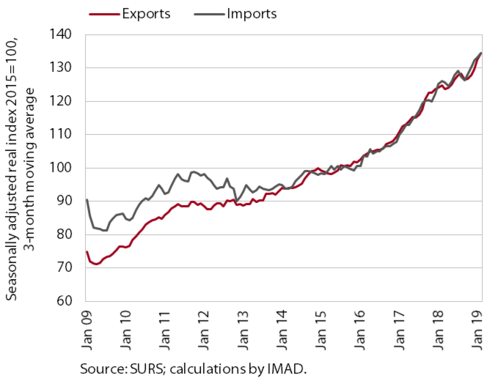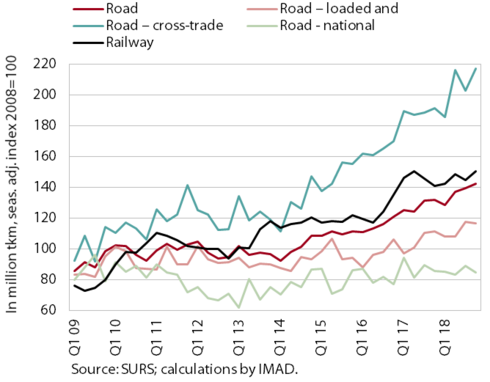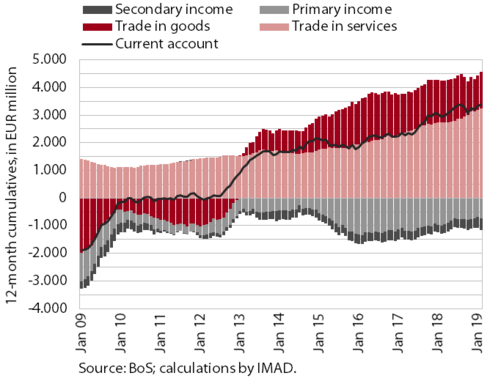Charts of the Week
Current Economic Trends from 8 to 12 April 2019: exports and imports of goods, manufacturing, current account, road and rail freight transport
Despite the moderation of activity in Slovenia’s main trading partners, the movements in the export-oriented part of the economy have remained favourable at the beginning of the year. However, the lower activity in the European car industry has already started to affect industries linked to the manufacture of motor vehicles and some intermediate goods. The surplus of the current account of the balance of payments remains high.
Exports and imports of goods, February 2019

Real exports and imports of goods recorded strong growth at the beginning of this year. Year on year, exports were up 11.5% in the first two months. As at the end of last year, the greatest contributions to growth were made by exports of medical and pharmaceutical products and some primary products. Expectations about exports have otherwise already been deteriorating for several months. The movements in exports of other main manufactured goods were less favourable. Exports of vehicles and related products (around 15% of total exports) and metal products were lower year on year. Growth in imports remained high, driven mainly by further growth in imports of consumer goods.
Road and rail freight transport – Q4 2018

At the end of last year, the volume of road and rail freight transport increased further. Despite the moderation of economic activity growth in Slovenia’s main trading partners, the growth of international road transport, especially cross-trade transport, remained high in the last quarter of 2018. Year-on-year growth in export revenue in this segment otherwise declined somewhat at the beginning of 2019. In rail freight transport, where growth is more volatile due to the small number of operators and the dynamics of one-off orders, the volume of transport increased. Growth in export revenues was also higher.
Current account, February 2019

The current account surplus remains high, despite the deterioration in the terms of trade. In the twelve months to February, it totalled 7.0% of GDP (EUR 3.4 billion). The higher surplus in current transactions continued to derive mainly from the surplus in services trade (especially trade in transport services and net inflows from travel), while this year’s strong growth in exports of goods contributed to a higher surplus in goods trade. The terms of trade are deteriorating, particularly owing to the slowdown of growth in export prices. A significant factor contributing to the higher surplus in current transactions remains the smaller deficit in primary income related to lower external debt servicing costs. A factor lowering the surplus was higher outflows of secondary income, particularly due to higher payments into the EU budget.
